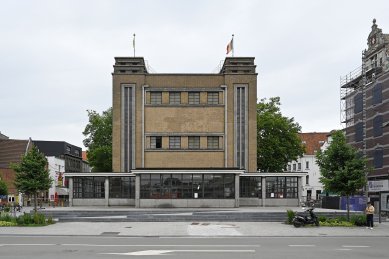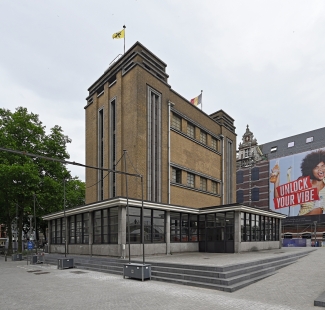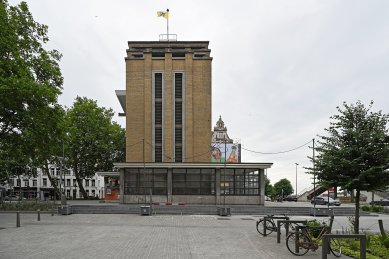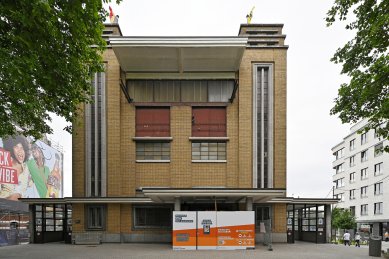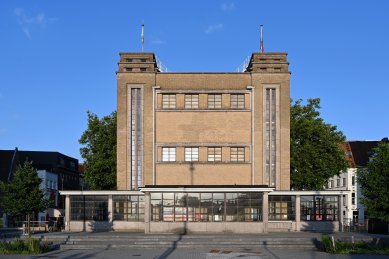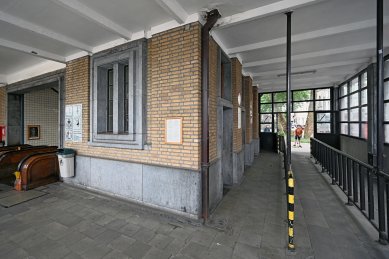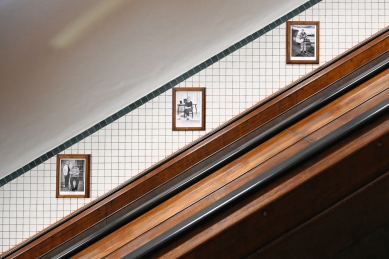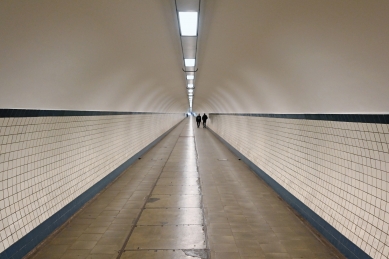
Sint-Annatunnel
The Pedestrian Tunnel

It was the interwar period when the decision was made to connect both banks of the River Scheldt in the Belgian city of Antwerp. Consideration was given to a bridge, which would have limited shipping traffic, or an underwater tunnel. Until then, the underwater tunnel was a significant world rarity, but for functional reasons, it was a rational decision. The city architect at the time, Emiel Van Averbeke, was responsible for this design. And thus I was born, the station of the underwater tunnel on both the right and left sides. Undoubtedly prominent buildings clearly outlined by the position of the tunnel.
Acting as an impregnable fortress, yet a place where crowds of pedestrians and cyclists have passed through for decades. The massive volume of the block has "towers" on the sides and "sits" on a horizontal, lightly appearing mass of entrances. A steel skeleton clad in yellow brick. A strict facade with a regular horizontal band of windows flanked by towers with narrow vertical glazing is my face. Split entrances and exits on the sides to maintain clear circulation within the structure, where you board the historic wooden escalators that take you down to a depth of 31 meters below ground level.
The passage allowed for easier connection between the new and old parts of Antwerp so that residents would not have to rely on boat transport across the banks of the River Scheldt. Inside the building, the above-ground part features walls covered in yellow masonry with a white beam ceiling. The surface of the walls smoothly transitions into ceramic cladding of white tiles, which form the visual aspect of the entire underground entrance and the tunnel itself. The overall experience of the passage is derived from the speed of your walk and the number of passersby. For locals on bicycles, it may take about a minute, but for regular pedestrians, it can stretch up to 10 minutes. The length of the tunnel is 572 m, and yet in such an enclosed space, it sometimes seems endless.
Acting as an impregnable fortress, yet a place where crowds of pedestrians and cyclists have passed through for decades. The massive volume of the block has "towers" on the sides and "sits" on a horizontal, lightly appearing mass of entrances. A steel skeleton clad in yellow brick. A strict facade with a regular horizontal band of windows flanked by towers with narrow vertical glazing is my face. Split entrances and exits on the sides to maintain clear circulation within the structure, where you board the historic wooden escalators that take you down to a depth of 31 meters below ground level.
The passage allowed for easier connection between the new and old parts of Antwerp so that residents would not have to rely on boat transport across the banks of the River Scheldt. Inside the building, the above-ground part features walls covered in yellow masonry with a white beam ceiling. The surface of the walls smoothly transitions into ceramic cladding of white tiles, which form the visual aspect of the entire underground entrance and the tunnel itself. The overall experience of the passage is derived from the speed of your walk and the number of passersby. For locals on bicycles, it may take about a minute, but for regular pedestrians, it can stretch up to 10 minutes. The length of the tunnel is 572 m, and yet in such an enclosed space, it sometimes seems endless.
Tereza Jeckelová
The English translation is powered by AI tool. Switch to Czech to view the original text source.
0 comments
add comment


